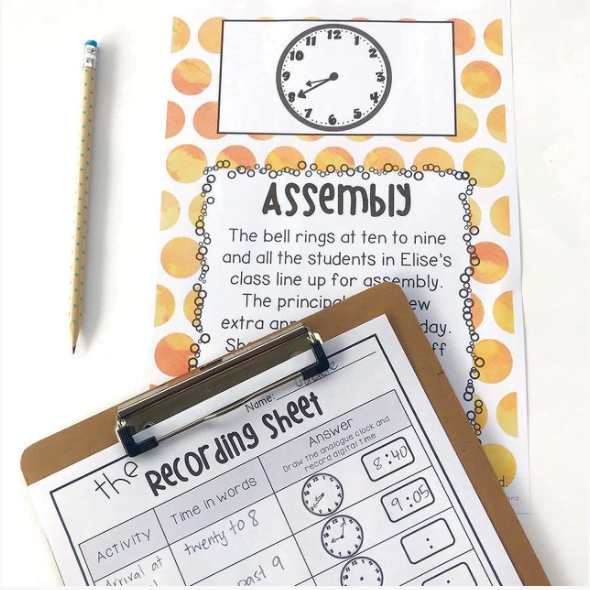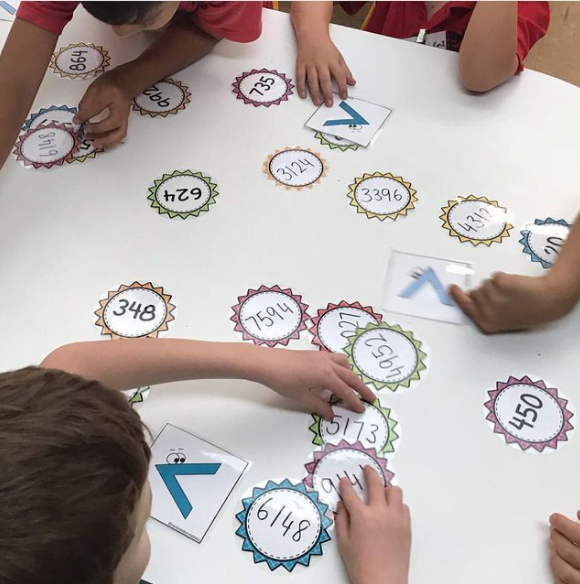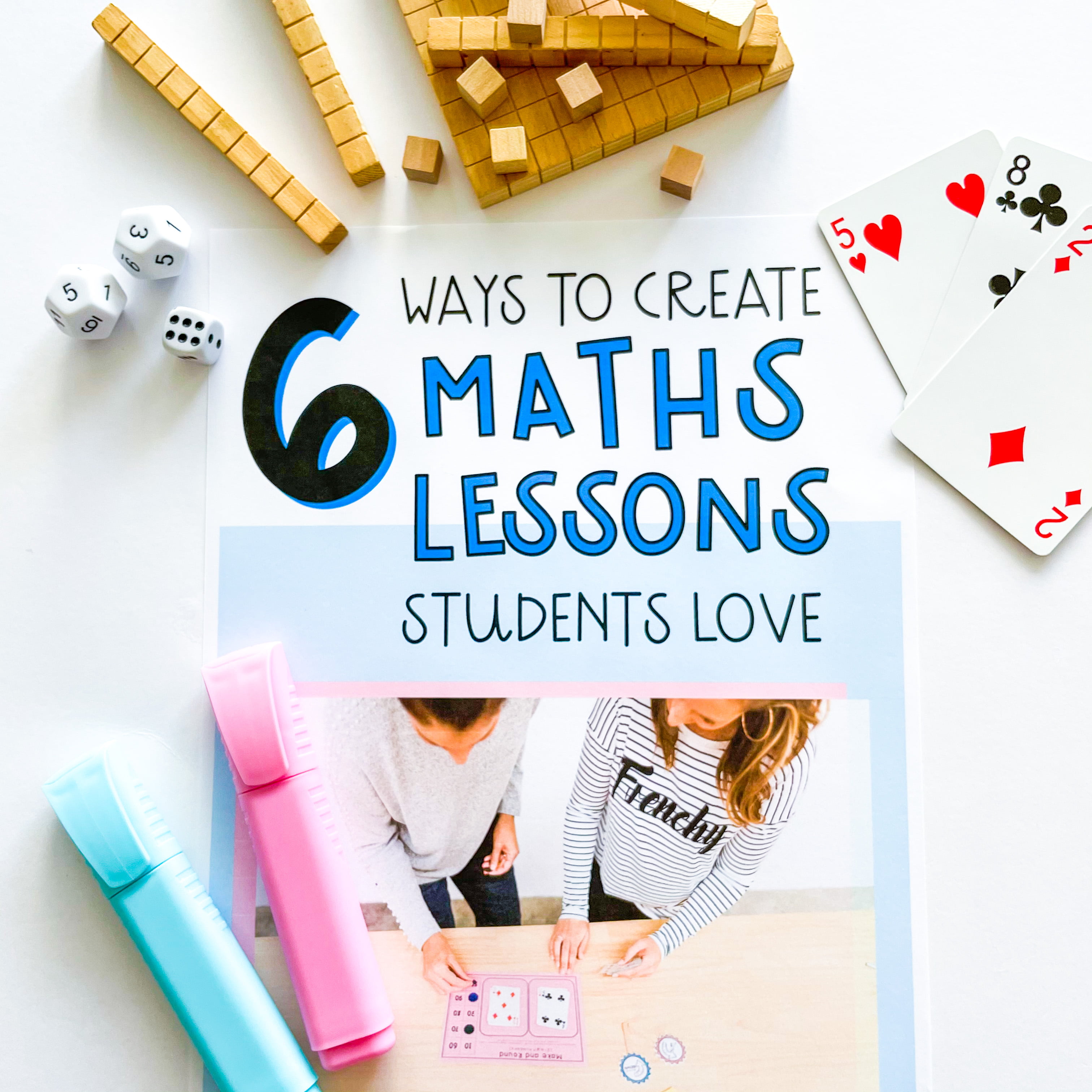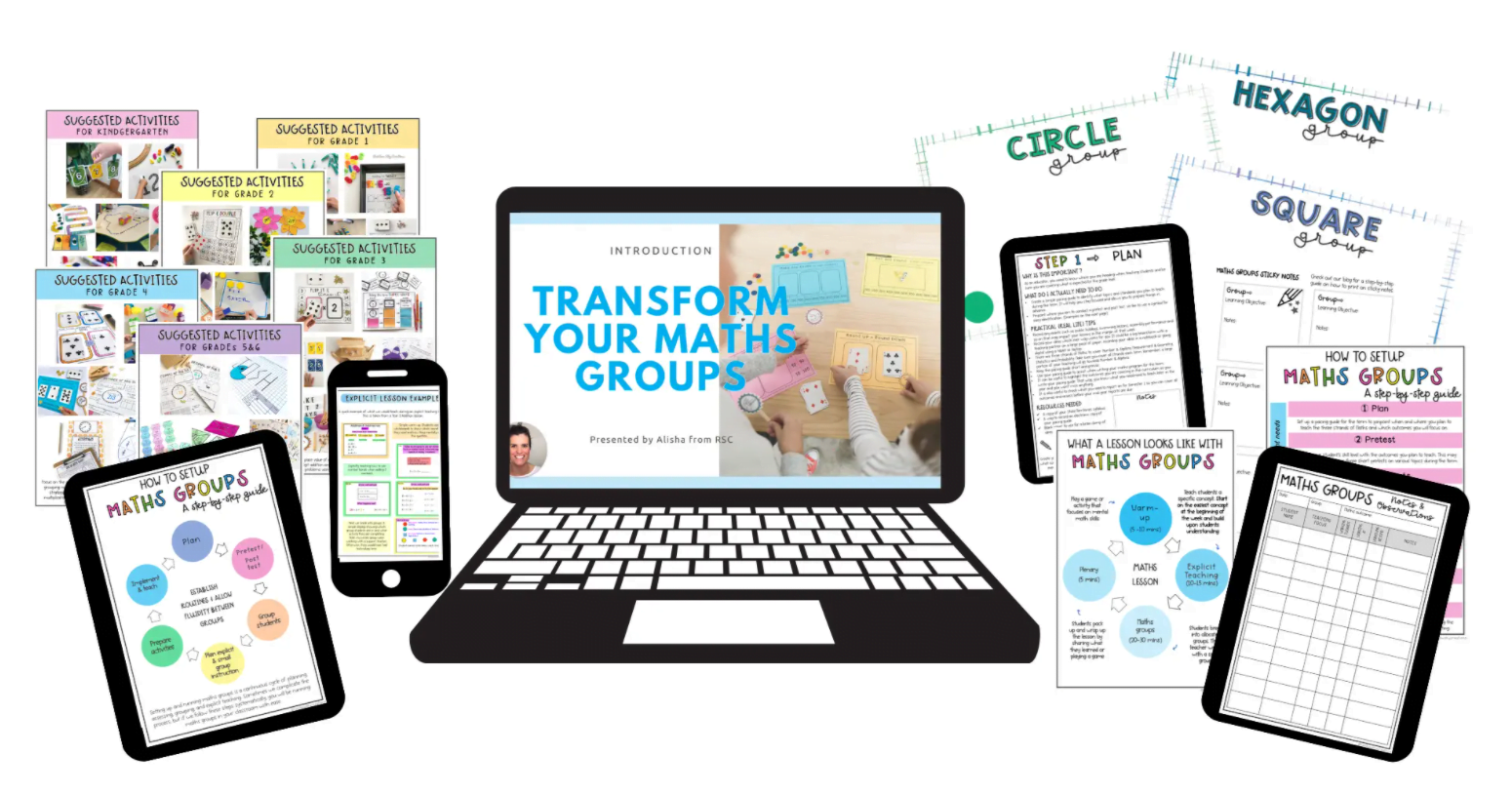If you are like most teachers, running Maths Groups in the classroom can be an overwhelming experience. With so many balls up in the air at once, it might have you asking the question, ‘Is this really worth it?’
The answer is YES!
“One of the best parts of maths groups is you get to meet with your students in a small group setting and really cater for their learning needs.” Rainbow Sky Creations
With a little bit of planning to get things up and running, you can have highly successful Maths groups where your lessons are differentiated; students are engaged, learning and most importantly, loving maths!
All it will take are some simple steps and a bit of organisation; putting a few new systems in place and a commitment to transforming your Maths lessons will result in a time of day that you and your students can’t wait for!
So, where to start? Don’t worry. We are here to help!
Maths groups are what changed our classrooms for the better, and we want that for you too. To help you get started, here are our 6 top strategies for successfully running maths groups in your primary classroom (Kindergarten through to Grade 6):
Plan activities that are familiar
Familiarity helps with time management but also fluency development and encouraging confident learners. Choose familiar activities, so you aren’t wasting too much time explaining what students need to do each week. You might have an activity the students are familiar with but focus on a different skill. E.g. A spinner game. Also, keep in mind that children learn best with repetition.
Minimise marking
You don’t need a pile of work that requires marking after maths groups each day. Try to limit activities you need to mark. Remember, your attention needs to be on the group learning with you.
Have a flexible list of each maths group
Because maths groups should be fluid, they may change frequently (even as you move from topic to topic). Consider having a template that you can easily change. For example, make a laminated chart and have each student’s name laminated, move the students’ name tags from group to group using blutac. Alternatively, go digital and leave it on the IWB for students. Simply copy and paste the slide from week to week.
Bonus tip: Name your groups simply. We like to use shapes, that way we can easily label activities or worksheets meant for each group with the shape on a sticky-note or bull clip.
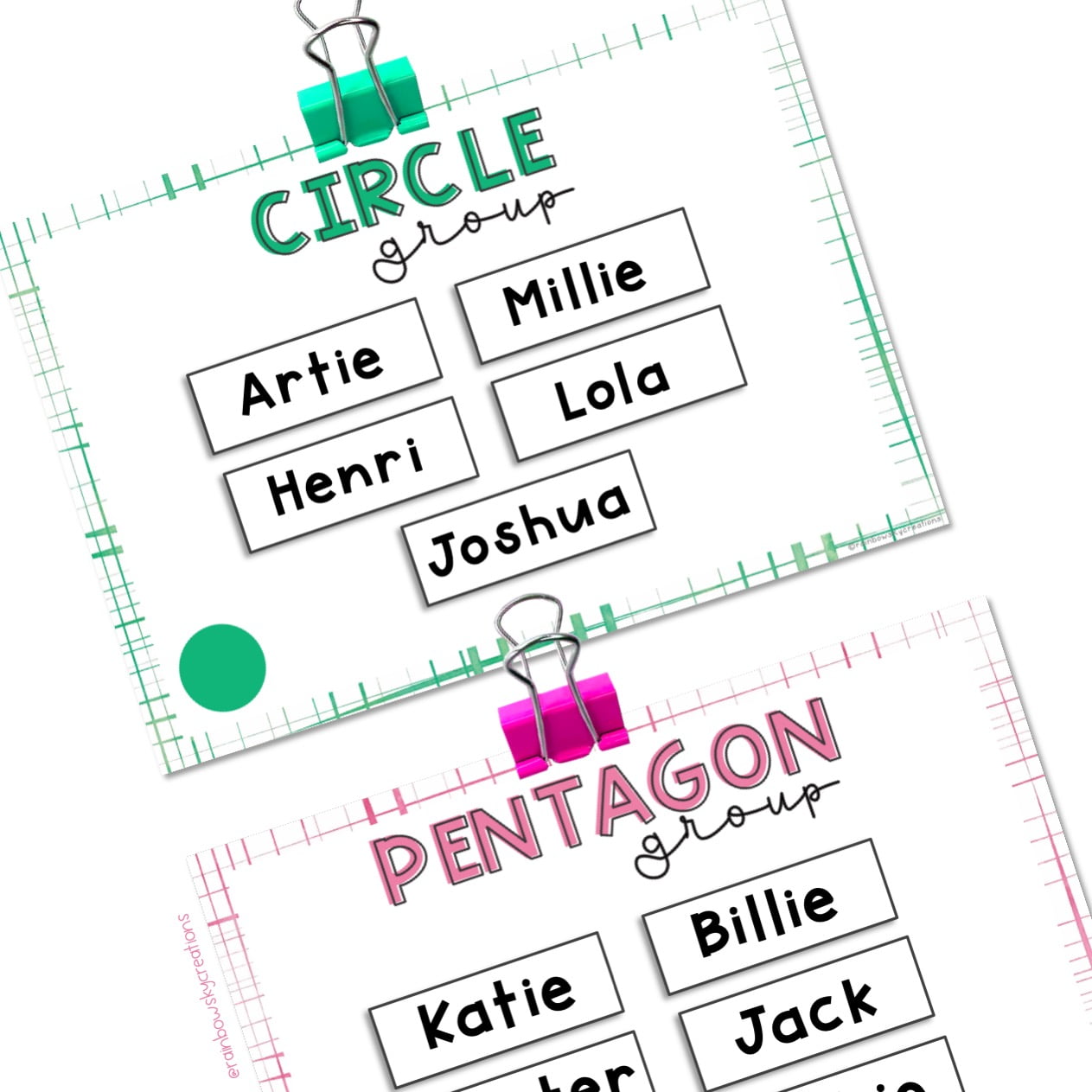
Explicitly plan for your small group instruction
One of the best parts of maths groups is you get to meet with your students in a small group setting and really cater for their learning needs. Don’t waste that precious time by not being prepared. Use pretests and your anecdotal notes to really target your student’s learning each week. Your planning doesn’t have to be complicated. We love the sticky note method.
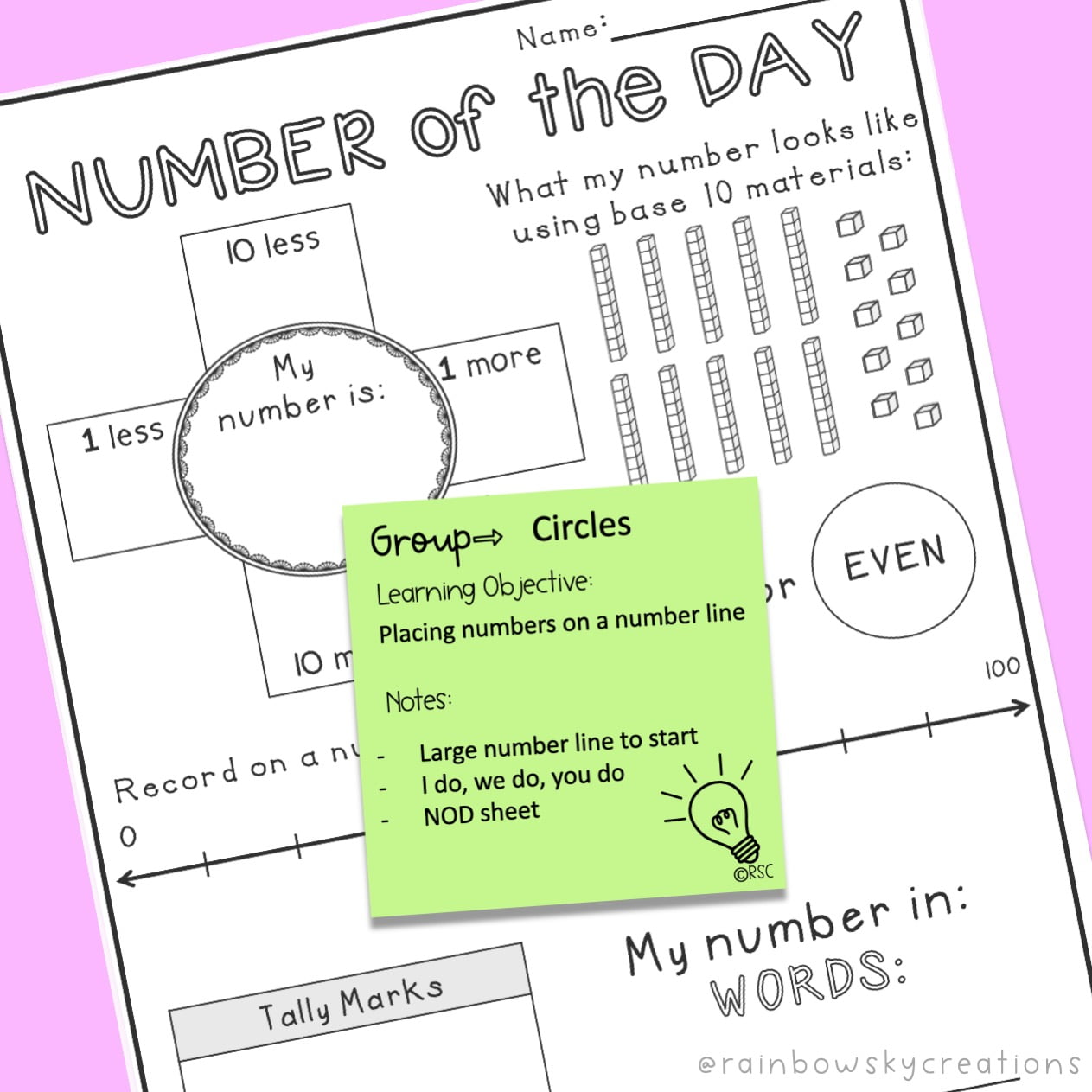
Record anecdotal notes by student
Having a page per student is our preferred way to record anecdotal notes. This way, you can record target areas, gaps and areas of need with plenty of space. We keep ours in a folder and order the student pages by group so it is simple to manage while teaching. It is also easier to refer back to and find notes when you have parent meetings or during report writing time.
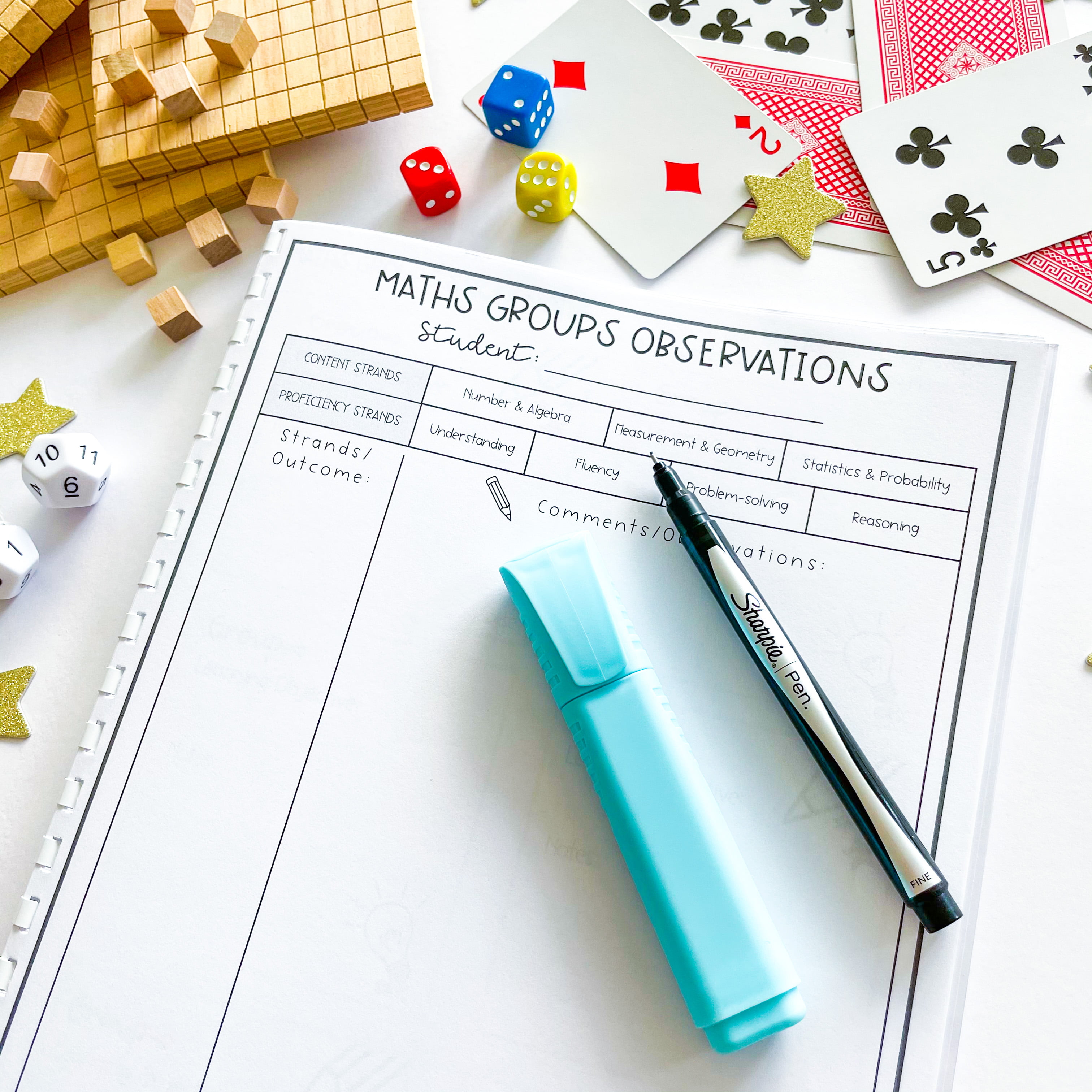
Run maths group activities without the ‘teacher group’ to begin
This way you can monitor and guide your students. You will need to explicitly teach students how to complete the activities independently. At the beginning of the year, dedicate a few lessons for students to work through a range of activities so that you can model, monitor and guide.
Bonus tip: Just like your literacy rotations, have clear, explicit expectations for what students do during maths groups and that they know when it is ok to interrupt you.
Love these tips and want to learn more about creating engaging maths lessons your students will love? Click here to grab our FREE guide.
Before you go…
WANT TO KNOW THE REAL SECRET TO SETTING UP FUN & DIFFERENTIATED MATHS GROUPS IN JUST ONE WEEK?
Imagine running a maths group program that is uncomplicated, easy to implement and stress free...
Introducing…
TRANSFORM YOUR MATHS GROUPS
- Learn how to Transform your lessons with maths groups so that you meet the learning needs of every student.
- Run successful maths lessons that are engaging & outcomes-based.
- Discover a streamlined 6-step system for targeted lessons.
- Make maths a time of day you and your students love.
So, what are you waiting for? Join us today!
What to read next:
10 Reasons why we LOVE Maths Groups
